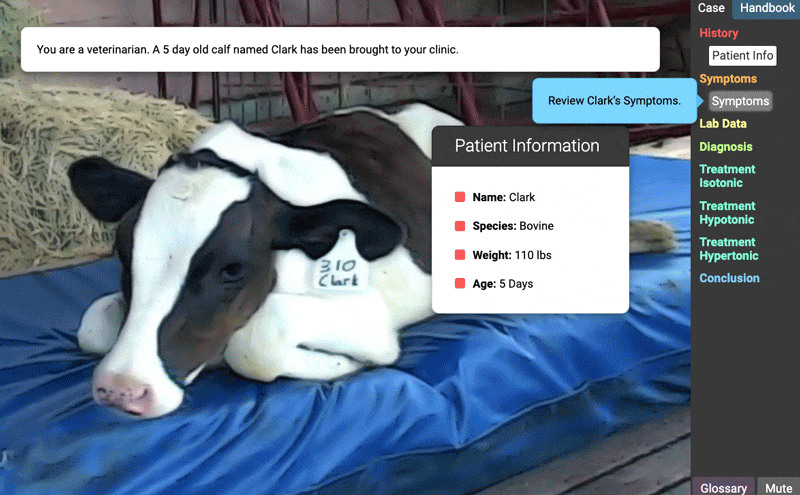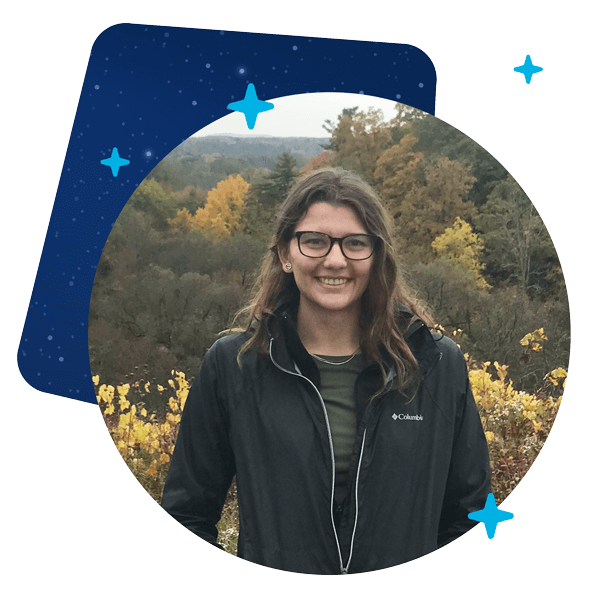- Home
- Success Stories
- Success Story Article
Student Teaching Brought Her Gizmos, Now She Brings Them to Her Students

New teacher Liz Hodgson teaches a diverse group of 9th- and 10th-grade students at Cohoes High School in the small urban district of Cohoes, New York.
The only high school in the district, Cohoes High School serves approximately 560 students from urban and semi-suburban populations. Approximately 66% of students receive reduced lunch at this public school. Due to immigration to the area, many of Hodgson’s students are English language learners (Ukrainian, Brazilian, Iranian). While one of her classes is a small group of special education students, she says her general education students face learning and executive functioning challenges, too, and many are supported by IEPs. Additionally, Hodgson notes all of her students “are facing the transition to high school and a new building, as well as leftover consequences of the pandemic and gaps in learning during middle school science.”
A fan right away
Hodgson first used ExploreLearning Gizmos in her student teaching placement in Manhattan at Harvest Collegiate High School, where a physical science teacher had purchased Gizmos for his class. “When I collaborated with him for an intensive elective week, we used Gizmos to discuss gas laws. I was thrilled when I began working at Cohoes and learned they provided all teachers and students with access to Gizmos,” Hodgson recalls.
Hodgson feels her students enjoy Gizmos since “digital literacy is a strength in their age group. My students have grown up playing video games and—especially with a user-friendly program like Gizmos—they are confident in clicking, exploring, and manipulating virtual environments.”
She continues, “In teaching life science, I find Gizmos particularly useful for observing cellular and subcellular structures. We certainly use real microscopes too, but Gizmos help multiple people look at and discuss something at the same time. As we move through the year, I’m looking forward to using Gizmos that deal with animals and ones that involve longer time scales than would be possible for a classroom lab.”
She’s seen what they do for students
As a first-year teacher, Hodgson can’t speak to the lasting impact of Gizmos, but, “I do see my students highly engaged and focused when using Gizmos, and more able to self-pace, taking time to draw something or make observations at the speed that they write or process information. I also have a student who is 100% virtual for medical reasons, and she likes how accessible Gizmos are. Other teachers in my school use Gizmos even more than I do!”

For Hodgson, she uses Gizmos about once or twice per month, to “keep up the novelty factor. Sometimes I use them as a follow-up to a similar lab we performed. For example, we’ve done a simple osmosis lab, and I’ll circle back with the Osmosis STEM Case later. We did a lab with real elodea plants, and then we did the Plants and Snails Gizmo. I’ve used Gizmos as an animation to show something in a whole class setting once or twice, but more frequently I frame it as a virtual lab.”
She continues, “I just find Gizmos extremely useful for the age level I work with. I can design low-floor, high-ceiling tasks that progress from easy observations to more complex thinking so that students can self-pace depending on their level—and I don’t have to worry about safety, preparing chemicals, or handling glassware.”

Liz Hodgson is currently in her first year of teaching 9th-grade life science in the small urban district of Cohoes, New York. Before moving to the capital region, she student taught and volunteered at multiple public high schools in Manhattan while completing her undergraduate degree from Barnard College, where she double-majored in neuroscience and urban teaching. Outside of teaching, she loves hiking, cooking, board games, and geocaching.
You might also like these stories...